The first time I stumbled across the Strands game, I wasn’t expecting to get hooked. I thought I’d spend a few minutes testing it, maybe solving one puzzle, then move on. But that one puzzle turned into a half-hour spiral, my coffee going cold on the table. It wasn’t about flashy graphics or fast reflexes. It was about focus, words, and patterns.
If you’re just stepping into the world of Strands, this guide will help you get comfortable with the basics, build your strategy, and even start cracking those tougher puzzles without needing to Google every other answer. Let’s dive into the world of letters, themes, and clever deductions.
What Is Strands?
Strands is a word puzzle game that challenges players to find words hidden within a grid of letters. Each puzzle is built around a central theme—though at first, you don’t know exactly what that theme is. The goal? Discover all the theme-related words and, along the way, uncover the Spangram—a special word that stretches across the puzzle, touching opposite sides.
Unlike other word games, Strands doesn’t spoon-feed you clues. It gives you a direction, then lets you roam freely. That freedom is what makes it frustrating at times—and deeply satisfying when you finally crack it.
My First Time Playing the Strands Game
When I opened my first Strands puzzle, I had no idea what I was doing. The hint was vague: “On the go.” That could mean travel, vehicles, running, or even food you eat while moving. I dragged my finger randomly across the screen, trying “bus” and “run”—they didn’t light up. Eventually, I hit on “train.” The word glowed, and the game gave a soft chime. That small success encouraged me to keep going.
But minutes passed, and I hit a wall. I had found “car,” “taxi,” and even “plane,” but the grid wasn’t fully solved. That’s when I learned an important truth: sometimes the words aren’t obvious. Sometimes you need to look at the puzzle sideways—literally and figuratively.
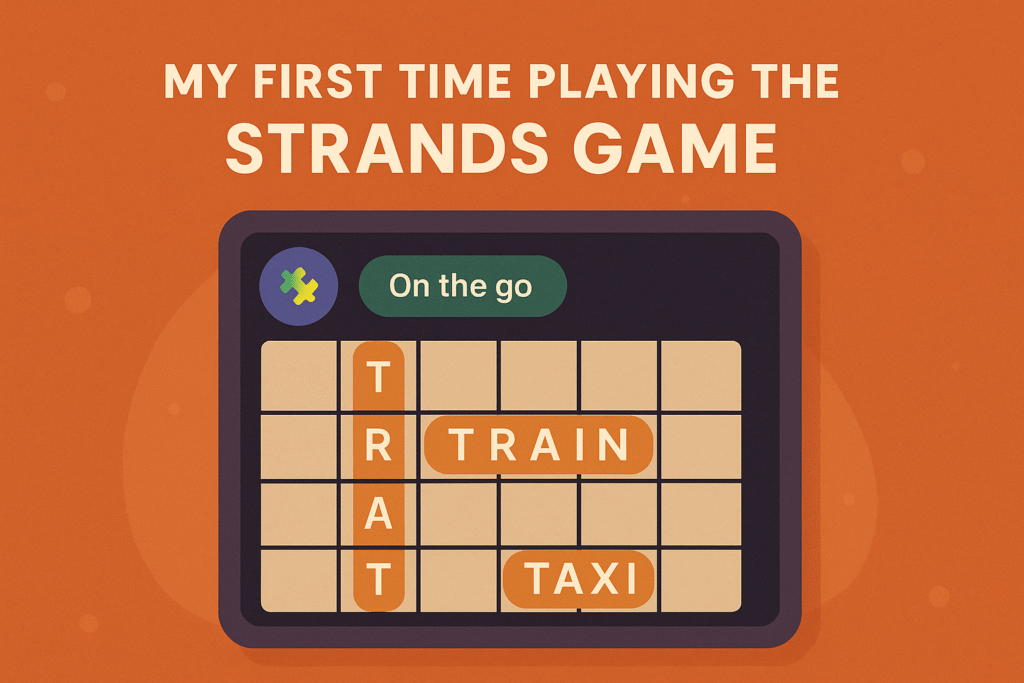
Learning the Grid: Understanding Patterns in Strands
In every Strands game, the grid holds your biggest advantage. Letters aren’t scattered randomly. Words are arranged vertically, horizontally, diagonally—and sometimes they wrap around corners. As you begin solving, the grid becomes less like a jumble and more like a language.
The key is to start by scanning for familiar letter groupings. If the theme is “things you wear,” and you spot “s-h-i-r,” it’s likely “shirt” is somewhere nearby. Always try to extend fragments and test possibilities. The game won’t punish you for being wrong, so explore freely.
Cracking the Spangram
The Spangram is a unique feature of the Strands game. It’s the one word that stretches from one side of the board to the other. Usually, it relates directly to the theme but in a broader or more abstract sense. For example, in a puzzle where the theme includes “jazz,” “rock,” “pop,” and “hiphop,” the Spangram might be “genres.”
You’ll want to save the Spangram for last—or stumble upon it by accident—because it often unlocks the final pieces of the puzzle. It also gives you a deeper understanding of the theme. Think of it as a key that ties everything together.
Strands Hints: Using Help Wisely
Strands offers hints—but they’re limited. You get a new hint every time you find three non-theme words, which are called valid non-themers. It’s tempting to spam random words just to unlock hints, but that’s rarely efficient.
Instead, focus on identifying theme words, and use hints only when you’re truly stuck. When a hint does arrive, it will highlight one of the theme words for you. That small push is often all you need to break through a mental block.
A good trick: before claiming a hint, scan the board again. Many times, the solution is hiding in plain sight, and stepping away for a minute or just rotating your phone can offer a fresh view.
The Psychology of Solving Strands
There’s a rhythm to Strands. You begin with curiosity, find a few quick wins, hit a wall, and then experience a breakthrough. That emotional cycle is part of the game’s appeal. But it can also work against you. If frustration builds, your brain starts looking too hard, missing the obvious.
When that happens, step back. Literally. Walk away from the screen, breathe, and return with fresh eyes. You’ll often solve the word that stumped you within seconds.
Another tip: say the letter combinations out loud. Sometimes hearing a pattern—“p-o-t” or “s-h-a”—helps your brain connect the dots faster than staring silently.
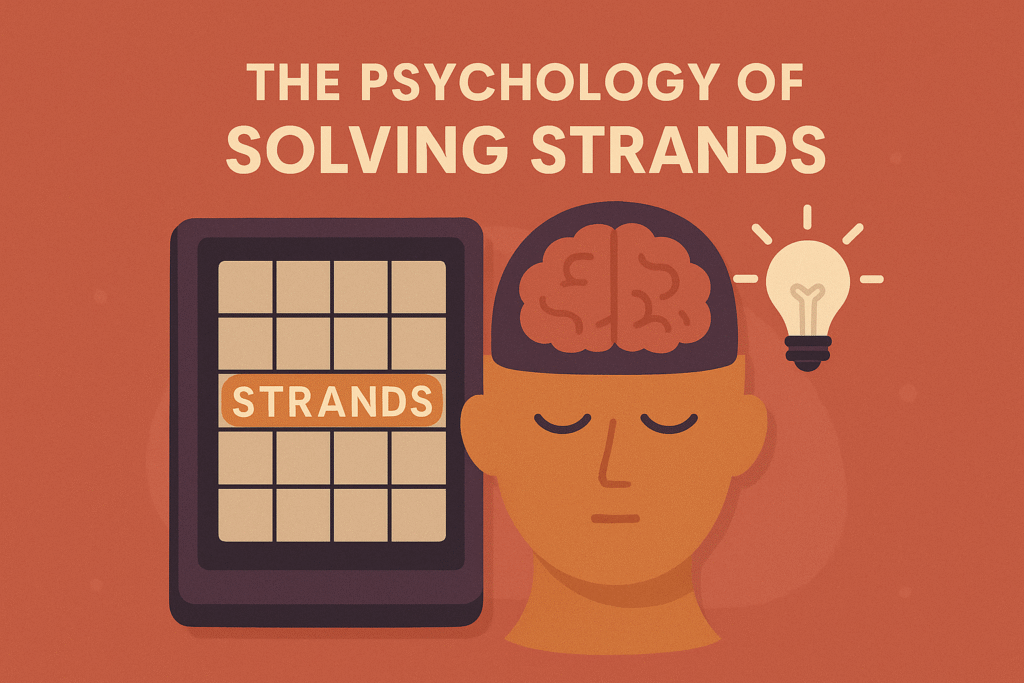
Common Themes and What They Teach You
The more Strands puzzles you play, the more you’ll notice recurring themes: musical instruments, breakfast foods, colors, dog breeds, types of fabric, countries, tools, and so on.
This repetition builds a sort of internal library. You begin to guess themes based on just a few words. See “canvas,” “silk,” and “linen”? You’re probably looking at types of fabric. That insight speeds up the process.
It also sharpens your general knowledge. You’ll find yourself learning about topics you never thought much about before—all while playing a game.
Mistakes Beginners Make (and How to Avoid Them)
It’s easy to fall into traps when starting out. You might:
- Focus too much on random words instead of theme-based words.
- Ignore the Spangram until it’s too late.
- Burn hints early and run out later when you really need them.
- Forget that words can curve and change direction mid-grid.
Avoid these pitfalls by keeping one goal in mind: always think about the theme. Every choice, every guess, should revolve around that. If the theme is “underwater,” don’t waste time trying “plane” or “forest.”
Improving Over Time: Building a Strands Routine
You don’t need to spend hours each day to get better. Just one puzzle a day sharpens your pattern recognition. With each game, you’ll start to see words faster, understand how themes are constructed, and even predict which kinds of Spangrams might appear.
Many experienced players also revisit older puzzles. Solving them again after some time can reinforce word patterns and reveal strategies you didn’t consider the first time.
Why the Strands Game Stays Addictive
What keeps people coming back to Strands isn’t just the wordplay—it’s the quiet satisfaction of solving something that initially looked impossible. It’s the thrill of seeing a grid filled with random letters slowly morph into a network of meaningful words.
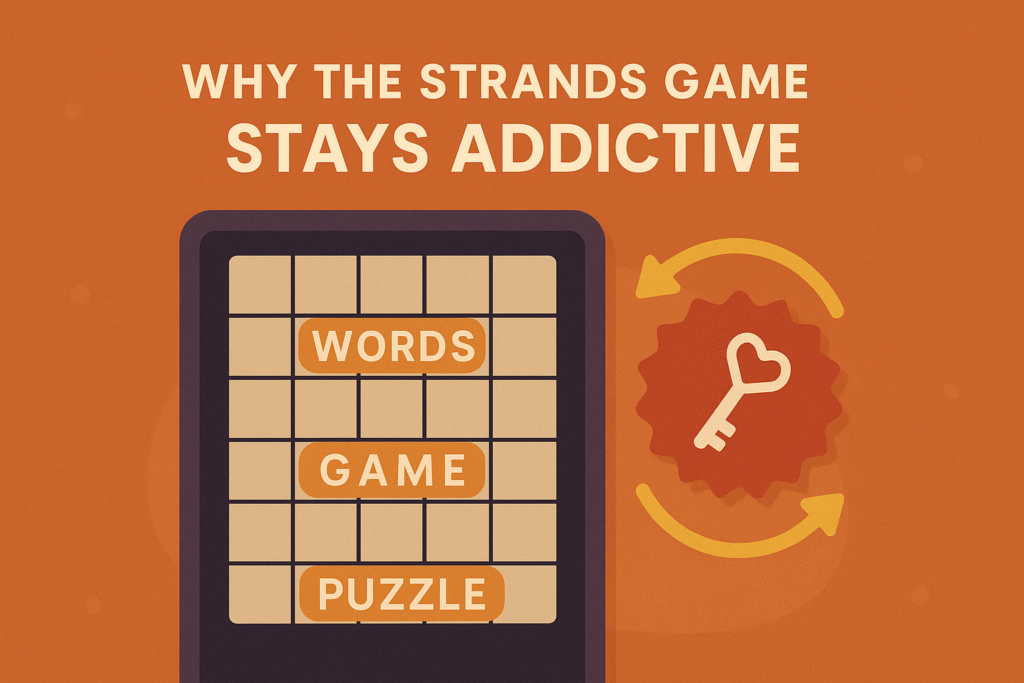
Every puzzle feels like a miniature mystery. You don’t need to be a wordsmith to play. Just curious. Just willing to think differently.
❓ Frequently Asked Questions (FAQs)
1. What is the Strands game?
Strands is a word puzzle game where players uncover theme-related words hidden in a letter grid. The challenge lies in identifying words based on a vague clue, uncovering a hidden Spangram, and completing the board without time limits.
2. How do I start solving a Strands puzzle as a beginner?
Start by identifying any obvious words related to the clue. Look for letter patterns in the grid and test out possible theme-based guesses. Don’t worry about being wrong—guessing is part of the learning curve.
3. What are Strands hints, and how do I earn them?
Strands hints highlight one of the theme words for you. You can earn them by finding three valid non-theme words in a puzzle. Use them wisely when you’re truly stuck.
4. What is a Spangram in the Strands game?
The Spangram is a special word in each puzzle that spans from one edge of the grid to the opposite side. It ties all theme words together and often reveals the core idea behind the puzzle’s theme.
5. Are there any tips to improve quickly in Strands?
Yes—play daily to build pattern recognition, focus on the puzzle’s theme, practice scanning for word fragments, and avoid using hints too early. Over time, you’ll naturally get faster and more accurate.
6. Can I play Strands offline or download it as an app?
Strands is currently available through web versions or via select platforms as APK downloads. If you’re on Android, you can explore safe APK options from trusted sources like strands.com.in.
7. Is Strands similar to Wordle or other word games?
While it shares similarities with games like Wordle, Strands offers more complexity through themed puzzles, letter grids, and the Spangram feature. It’s a slower-paced, strategic alternative ideal for deeper puzzle fans.
8. Why do some words I find not count in the puzzle?
Only theme-related words and valid dictionary words are accepted. If a word doesn’t contribute to the theme or meet dictionary standards, it won’t be accepted—even if it’s technically correct.
Final Thoughts: Make Strands a Daily Habit
If you’re just starting your journey with Strands, know this—it gets better. What feels difficult today will feel natural tomorrow. You’ll start spotting words faster, recognizing themes earlier, and relying less on hints.
The game rewards patience and creativity in equal measure. And with daily puzzles always offering a new challenge, there’s always more to learn.
So the next time you open a Strands puzzle, don’t rush. Enjoy the process. Treat it like a conversation with the grid—one where the letters are just waiting for you to listen closely.
Strands hints may nudge you in the right direction, but mastery comes from repetition, intuition, and a bit of stubbornness. Whether you’re playing on your commute, at a café, or during a quiet evening, the Strands game will stretch your mind in unexpected ways.
And who knows? Maybe your cold coffee moment is just the beginning.

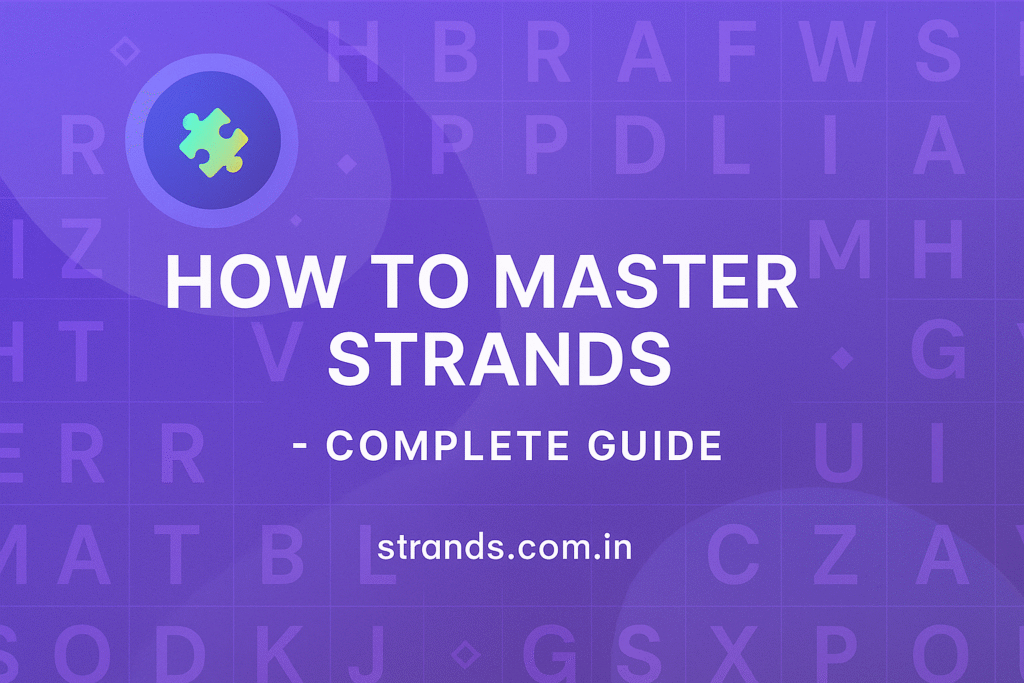
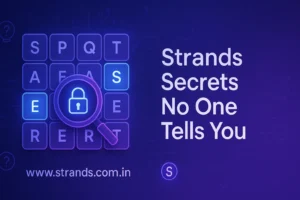
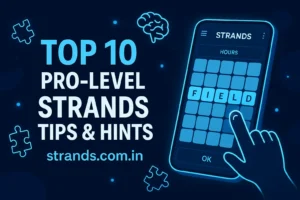

Leave a Comment